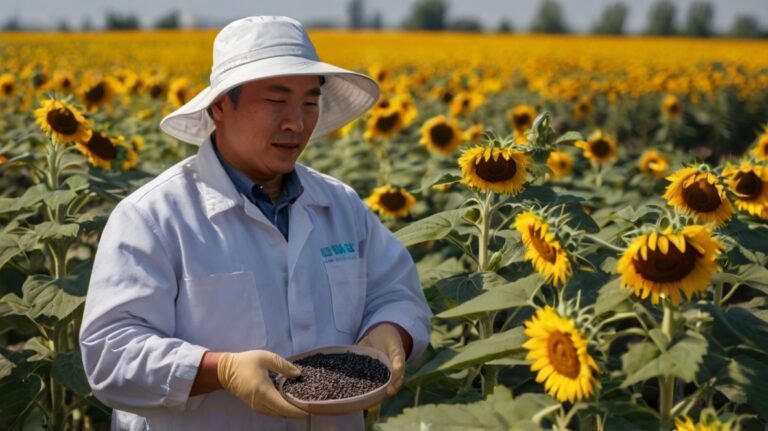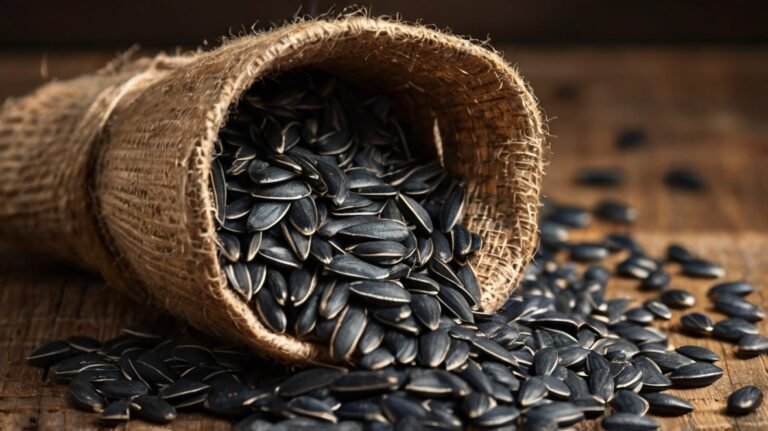Are you ready to embark on a sunflower-growing adventure? Look no further than XingYi Trading's premium 363 sunflower seeds! In this comprehensive guide, we'll walk you through everything you need to know about growing these nutrient-rich, flavorful kernels. From planting to harvesting, we've got you covered with expert tips and tricks to ensure a bountiful crop.

Why Choose 363 Sunflower Seeds?
Before we dive into the growing process, let's explore why 363 sunflower seeds are the perfect choice for your garden:
- Superior quality from Inner Mongolia's sunflower capital
- Meticulously crafted for excellence
- Unrivaled flavor and nutritional value
- Part of XingYi Trading's 70,000+ ton annual production
Internal Link: Learn more about our Premium 363 Sunflower Seeds
Preparing Your Soil for 363 Sunflower Seeds
The key to successful sunflower growth lies in proper soil preparation. Follow these steps to create the perfect environment for your 363 sunflower seeds:
- Choose a sunny location with well-draining soil
- Test soil pH and aim for 6.0-7.5
- Amend soil with organic matter if needed
- Loosen soil to a depth of 12 inches
- Remove any weeds or debris
Internal Link: Discover our sunflower seed farming techniques
Planting Your 363 Sunflower Seeds
Now that your soil is ready, it's time to plant those premium 363 sunflower seeds:
- Wait until soil temperature reaches 50°F (10°C)
- Plant seeds 1 inch deep and 6 inches apart
- Water thoroughly after planting
- Thin seedlings to 12-18 inches apart when they reach 6 inches tall
Nurturing Your 363 Sunflower Plants
As your sunflowers grow, they'll need proper care to thrive:
- Water deeply once a week
- Fertilize with a balanced NPK fertilizer every 4-6 weeks
- Support tall varieties with stakes if needed
- Monitor for pests and diseases
- Mulch around plants to retain moisture and suppress weeds
Internal Link: Explore our organic sunflower seed options
Harvesting Your 363 Sunflower Seeds
The moment you've been waiting for has arrived! Here's how to harvest your 363 sunflower seeds:
- Wait for flower heads to turn brown and dry
- Cut heads off with 4-6 inches of stem attached
- Hang upside down in a dry, well-ventilated area for 1-2 weeks
- Rub seeds out of the flower head
- Clean and store seeds properly
Internal Link: Learn about our sunflower seed harvesting equipment
Storing Your Harvested 363 Sunflower Seeds
Proper storage is crucial to maintain the quality of your harvested seeds:
- Ensure seeds are completely dry before storing
- Store in airtight containers or sealed bags
- Keep in a cool, dry place away from direct sunlight
- Label containers with harvest date and variety
- Use within 3-6 months for best flavor and nutrition
Internal Link: Discover our tips for storing sunflower seeds
Enjoying Your Homegrown 363 Sunflower Seeds
Now that you've successfully grown and harvested your 363 sunflower seeds, it's time to enjoy them! Here are some delicious ways to savor your homegrown bounty:
- Roast with salt for a classic snack
- Add to salads for a nutty crunch
- Use in baking for added texture and nutrition
- Make homemade sunflower seed butter
- Sprinkle on yogurt or oatmeal for a healthy breakfast boost
Internal Link: Explore sunflower seeds in cooking

Troubleshooting Common 363 Sunflower Growing Issues
Even with the best care, you may encounter some challenges. Here's how to address common issues:
- Yellowing leaves: Check for nutrient deficiencies or overwatering
- Stunted growth: Ensure adequate sunlight and proper soil preparation
- Pest infestations: Use organic pest control methods
- Drooping heads: Provide support for tall varieties
- Poor seed production: Improve pollination with companion planting
Internal Link: Learn about sunflower seed traditional medicine uses
By following this comprehensive guide, you'll be well on your way to growing a bountiful crop of premium 363 sunflower seeds. Remember, XingYi Trading is here to support you every step of the way with our high-quality seeds and expert knowledge. Happy growing!
Internal Link: Explore our full range of sunflower seed products







